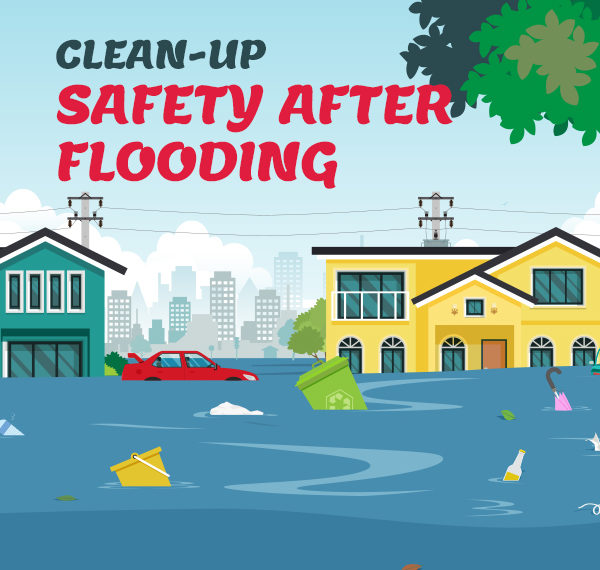As our nation continues to recover from the effects of devastating flooding, we encourage you to help where you can and support those that were affected. Even in the aftermath of flooding, your health and safety should be a priority.
While you may be eager to clean up or help where you can, there are several safety precautions you should observe before getting involved. Whether you were directly affected or you’re in the spirit of helping, here are a few important points to note when doing your part.
1. Be Properly Dressed
If you experience any flooding within your home or surrounding areas, it’s important to be properly dressed when assessing damages or moving through the area. Ensure that your body is fully covered and also use protective clothing such as gloves, safety goggles, a mask and rubber boots . A great idea is using a tall stick to probe the areas in front of you before walking through.
Remember – even if flood waters seem still, you can never be sure if there are displaced animals, sewage or water-borne illnesses lurking beneath the surface.
2.Ventilate, Clean & Disinfect
Before cleaning up any flood-affected areas, it’s a good idea to document any losses and damages. A good practice is capturing digital photos of flood damage which would greater safeguard your assets if you need to file for an insurance claim or grant.
For severely waterlogged areas, a utility pump is a useful tool in clearing and removing the water. Before choosing to use a pump, have the area evaluated for any electrical-related damages or loose ends to avoid any hazards.
To remove difficult mould stains, try mixing a bleach solution and a scrubbing brush and clean any excess solution with a mop or sponge. Mould can cause severe breathing problems if not treated within 24 – 36 hours of flooding, so removing it should be a priority.
After any cleaning efforts, be sure to open windows to allow the area to properly ventilate and dry.
3. Cleaning Water-logged Clothing/Textiles
If you’ve experienced any damage to clothing or textile-based items such as curtains, you may be wondering how to restore them or if you should even keep them at all. Because of possible water-borne bacteria or sewage in flood water, attending to water-logged clothing/textiles must be done as soon as possible. If these items seem damaged beyond rehabilitation, it is in your best interest to safely discard them.
Before washing with any disinfectant or in a washing machine, it’s a good idea to hose your clothing/textiles with water to remove the initial waterlog. Hosing your clothing/textiles will also help to remove any loose sediments and any other debris.
If you are using a washing machine that was affected by flooding, have an electrician check for any short circuits or damage before using. Disinfect the washing machine by running am empty cycle with a cup of bleach.
Next, place the clothing/textiles in a washing machine with a disinfectant wash and detergent, using small batches to allow as much water to soak through as possible. Be sure to use hot water and wash as many times as needed.
It’s best to hang your clothing in a well-ventilated area when drying, – ideally in the sun to kill any mildew- as a dryer may cause heat damage, discolouration or shrinkage.
